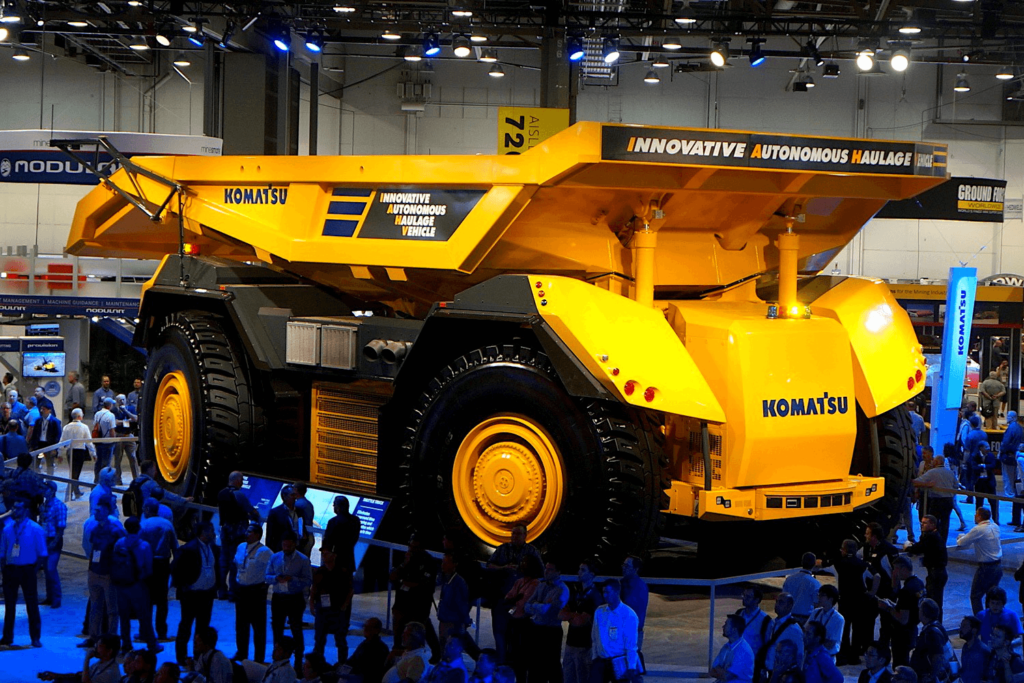Innovating the Future: Cutting-Edge Trends and Technologies in Construction Machinery
Introduction
In the dynamic realm of construction, innovation serves as the engine driving progress. As the industry embraces sustainability, efficiency, and safety as core principles, the evolution of construction machinery stands at the forefront of transformative change. In this exploration of future trends and technologies, we dive deep into the exciting landscape of construction machinery, examining how industry leaders are pioneering new solutions to meet the challenges of tomorrow.
Sustainable Solutions: Pioneering Green Construction
Case Study: Volvo CE’s Electric Compact Excavator
Volvo Construction Equipment (CE) has long been committed to sustainability, and its recent unveiling of the EC15 Electric compact excavator exemplifies this dedication. This groundbreaking machine is powered by lithium-ion batteries, eliminating harmful emissions and significantly reducing noise pollution. By leveraging electric propulsion technology, Volvo CE not only addresses environmental concerns but also responds to the growing demand for eco-friendly construction practices. With reduced operating costs and minimal maintenance requirements, the EC15 Electric represents a bold step towards a greener future for the construction industry.
Case Study: Caterpillar’s Hybrid Wheel Loader
Caterpillar, a global leader in construction machinery, has introduced the Cat 336 Hybrid wheel loader—a testament to its commitment to sustainable innovation. By integrating diesel power with electric technology, Caterpillar achieves substantial fuel savings without compromising performance. The hybrid system intelligently manages power demands, utilizing regenerative braking to capture and store energy for future use. With a focus on efficiency and environmental stewardship, Caterpillar’s hybrid wheel loader sets a new standard for sustainable construction machinery, paving the way for cleaner, more efficient operations on job sites worldwide.
Autonomous Machinery: Shaping Tomorrow's Construction Sites

Case Study: Komatsu’s Autonomous Haulage System
Komatsu, renowned for its cutting-edge technology solutions, is revolutionizing construction sites with its Autonomous Haulage System (AHS). This innovative system enables unmanned operation of haul trucks, leveraging advanced GPS technology and real-time data analytics to optimize efficiency and safety. By eliminating the need for human operators in hazardous environments, Komatsu’s AHS enhances workplace safety while maximizing productivity. With autonomous machinery reshaping traditional construction practices, Komatsu remains at the forefront of innovation, driving the industry towards a future defined by efficiency, reliability, and safety.
Case Study: Trimble’s Connected Site Solutions
Trimble, a leading provider of technology solutions for construction, is empowering contractors with its Connected Site solutions—a comprehensive suite of tools designed to enhance productivity and efficiency on job sites. By integrating machine control systems, telematics, and remote monitoring capabilities, Trimble enables seamless communication and collaboration across construction teams. Contractors can leverage real-time data to optimize workflows, minimize downtime, and reduce costly rework. With Trimble’s Connected Site solutions, construction professionals can unlock new levels of efficiency and productivity, laying the foundation for a more connected and collaborative future in construction.
Digital Twin Technology: Revolutionizing Construction Planning and Management
Case Study: Liebherr’s Digital Solutions for Construction
Liebherr, a pioneer in construction machinery manufacturing, is harnessing the power of digital twin technology to revolutionize construction planning and management. Through its innovative digital solutions, Liebherr offers virtual replicas of its machinery, enabling real-time simulation, optimization, and predictive maintenance. By visualizing construction projects in a digital environment, contractors can identify potential issues, streamline workflows, and optimize resource allocation. Liebherr’s digital solutions empowers construction professionals to make informed decisions, enhance project efficiency, and drive success from concept to completion.
Case Study: John Deere’s Smart Construction Solutions
John Deere, a trusted name in equipment manufacturing, is leading the way with its Smart Construction solutions—a suite of technologies designed to streamline construction operations and maximize productivity. By integrating machine control, grade management, and telematics, John Deere provides contractors with the tools they need to achieve higher levels of precision and efficiency on the job site. Features like grade control and 3D modeling enable contractors to optimize workflows, minimize rework, and deliver projects on time and within budget. With John Deere’s Smart Construction solutions, contractors can work smarter, faster, and more profitably, driving innovation and success in the construction industry.
Conclusion: Embracing the Future of Construction Machinery
As we embark on a journey into the future of construction machinery, one thing is clear: innovation is the driving force behind progress. From sustainable solutions and autonomous machinery to digital twin technology and beyond, the industry is undergoing a profound transformation. By embracing these cutting-edge trends and technologies, construction professionals can build a brighter, more sustainable future for generations to come. As we pioneer new solutions and push the boundaries of what’s possible, let us continue to shape the future of construction machinery together, driving innovation, efficiency, and sustainability in the construction industry.
